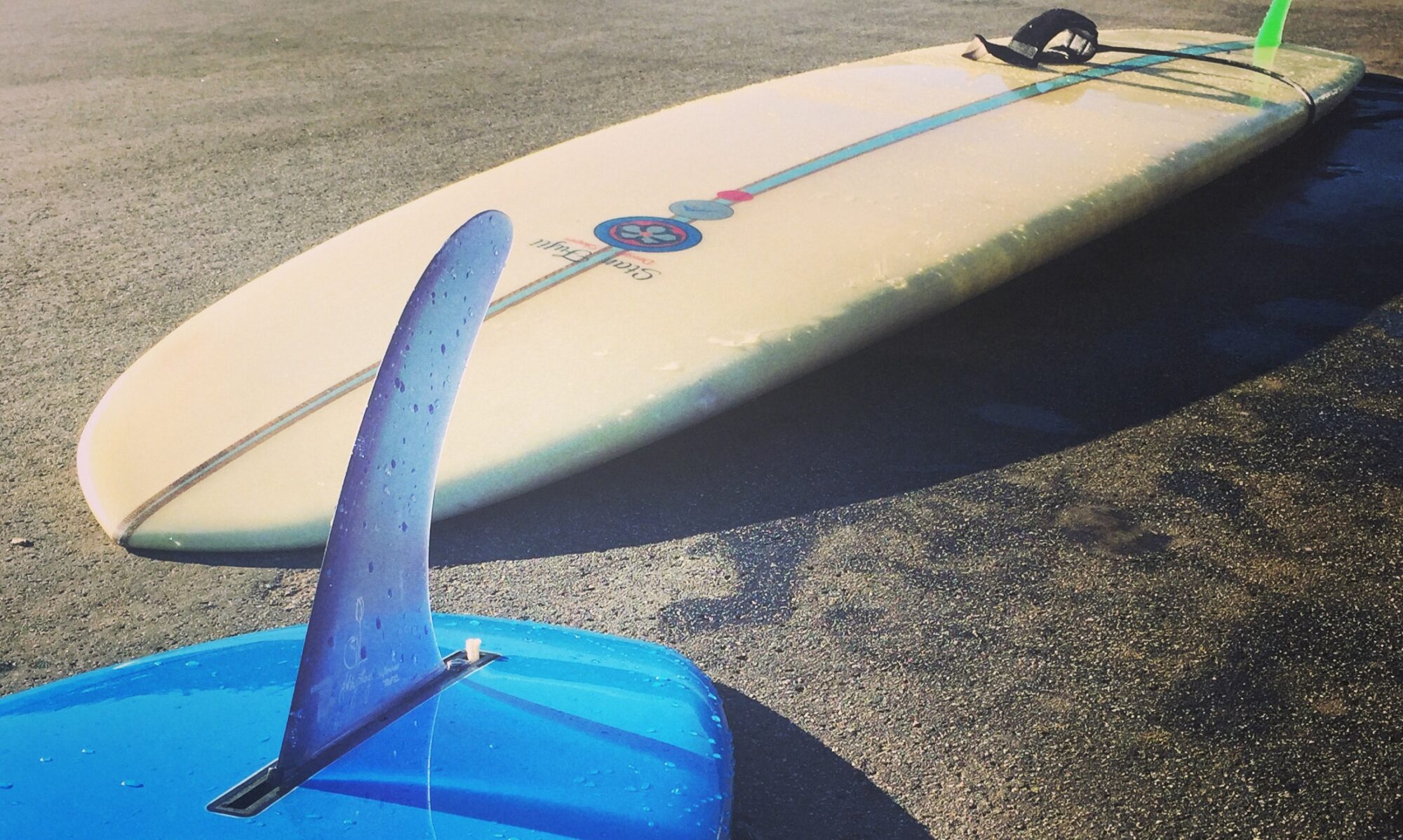😀
Back when Sunset Shapers opened, I recalled reading on their site about shaping lessons. I filed that bit of info away in the “Oh man, I’d love to do that” archives.
Just before Christmas, they had a coupon for lessons via Facebook. I got one, hoping it would finally get me to move shaping lessons from the “I want to do that” column to the “I’m totally doing that” column.
It did!
I had a little chat with James about what I wanted to make. The options came down to a proper noseriding longboard and a fish. Feeling like I’d get more use out of the fish in local waters (or on trips) I went fish.
The classes are divided up into two 3 hour sessions.
The first session is about the blank, the tools, the shaping room, the process of removing the outer “bark” from the blank, using the surform to smooth everything down, deciding on templates, measuring, measuring again, trimming the extra foam off.
Gordon was great. He answered all my questions. He walked through everything and was happy to share info.
A 6’5 blank. Nice and wide for fish.
Overall board length: 6’4
Width 1ft from the nose: 15 3/4″
Wide point: 21″
Width 1ft from the tail: 16″
We round a combination of templates that made a smooth transition between all the points of measurement.
The act of shaping is all about creating a craft with smooth flowing, lines through smooth, flowing strokes. The template needs to flow so the water can flow, right?
Tim reminded me of this scene:
At the end of the day, we had a square railed, fish shaped block of foam:

Day 2 was all about the finesse. Bottom contours, rail shape, tail details, nose details, basically everything that gives this board it’s character.
We started with lots and lots of passes with the surform to trim the board down to the thickness we wanted (2 3/4″) I got to do a lot of this work (since it was harder to mess up, ha) and was getting the hang of using the surfom correctly.
Here’s Gordon trimming down the stringer so I can do more surform passes on the bottom:

Next we worked on the bottom concave. Single to double concave. This took lots of very small movements, checking and rechecking the depth, and plenty of eyeballing.
So much of this is by feel or by sight that Gordon had me look at things in progress so I could see what it looked like if one side was less concave than the other, then showed me how to fix it. We did this with the stringer too, I’d look to see where the stringer was too flat, then Gordon would get it nicely into a smooth shape again.
It was really interesting to see how everything evolves. The board isn’t ruined if there’s a little more foam here, it is still in progress and can be brought back into check (within reason, you obviously can’t add foam back in.) The point being, every stroke or step doesn’t have to be perfect, but the change has to be slow and symmetrical so that the finished board is perfect.
I had so many questions answered. So many thing I thought maybe were aesthetics, actually had real reasons behind them. Like the swallow tail, there rails on the tail are very square on one side and rounded on the top, allowing the water to release under the board for speed and turns, but hold over the top to keep the board in the face nice and snug for more control.
Rail work was super delicate. Gordon did all of that work. I mostly said “yup, that’s even” or “looks a little rounder on this side”
Next steps: cutting fin boxes, cutting the leash plug, and glassing!
This part’s really exciting. I don’t get to sit in on it, but I’ve done a ton of sketching, holding boards, and talking to James about options. I sketched so many MANY options, dozens at least, before settling on this guy:
Now to wait for James to do his magic.
I highly recommend this class to anyone who wants to know more about what goes in to hand shaping a board or anyone who wants to be able to better read how a board will perform. It’s a great class.
I’d love to shape another board. Gordon said the best way to do it is to find a board I want to copy, bring it in, and book some time with him of James to help. They’d leave me to do more of the work myself and help guide in the hard parts.
Very stoked. 😀







